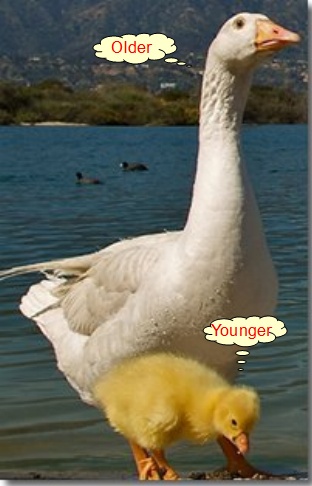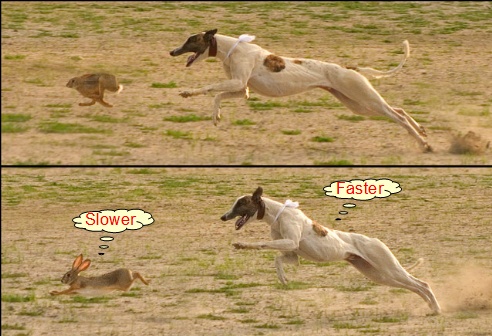Physics Notes - Herong's Tutorial Notes - v3.25, by Herong Yang
What Is Time
This section provides a quick introduction of time, which is a property of our universe that gives us a sense of age of living things and speed of changing object.
What Is Time? Time is a property of our universe that gives us a sense of age of living things and speed of changing object.
Time helps us to define the age of animal by measuring how much time has lived since it's birth. An "older" age animal has lived more time. And a "younger" age animal has lived less time.
For example, if we compare a baby goose with an adult goose, we can see that the baby goose has lived less time and the adult goose. So we say that the baby goose is "younger" than the adult goose.

Space also helps us to define the speed of a changing object by comparing the amount of change against the amount of time past. A "faster" change means that there is less time past for a given amount of change. A "slower" change means that there is more time past for the same given amount of change.
For example, if we look a hound chasing a rabbit, we can see that the speed of the rabbit is "slower" than the hound. The rabbit needs more time to run than the hound for the same distance.

Table of Contents
Introduction of Frame of Reference
Second Prefixes and Other Units
Introduction of Special Relativity
Time Dilation in Special Relativity
Length Contraction in Special Relativity
The Relativity of Simultaneity
Minkowski Spacetime and Diagrams
Introduction of Generalized Coordinates